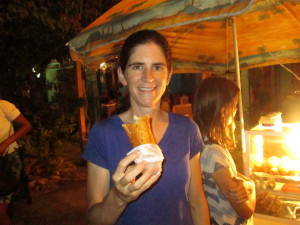It wasn’t the Oregon Trail, or even Route 66, but it turned out to be a pretty long day of travel linking us from Tortuguero on the Caribbean to Quepos, where we are today, on the hills above the Pacific.
Yesterday’s breakfast was administered by Mrs. Beyette’s sleepy daughter, who was kept awake be the rain. She has to sweep out the breezeway, it seems, when the roof leaks, and she said she was up late doing that. Still, she was to fuel us up, and then, hopefully, take a siesta. I don’t think there were any other guests there when we left.
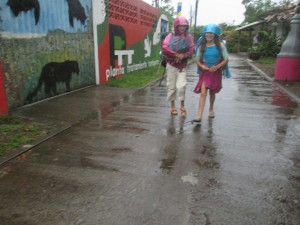
A rainy start to the morning commute, but no delays reported on Tortuguero’s main artery.
It was still raining as we hit the car-free road to the public boat terminal, which, surpisingly isn’t the nice town docks a little north of Mrs. Beyette’s place. Instead we walked a few minutes south to a place where the public water buses just slide up on shore a little.
We had purchased our tickets the afternoon before — 1,600 colones apiece plus 1,000 apiece for each of our big backpacks — to be sure we got on the 9 a.m. boat. An early start would be crucial in making all of our connections.
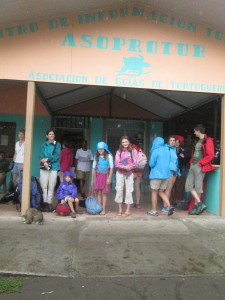
All we need now is the boat. Plus the other boat for our luggage.
The 9 a.m. water bus was sufficiently full of tourists and traveling locals that all our baggage was placed on a separate boat (and coveredy by a tarp). This proved important because not long into the trip we turned onto a small side stream that was choked with fallen logs, often very shallow, and flowing pretty consistently against our direction of travel.
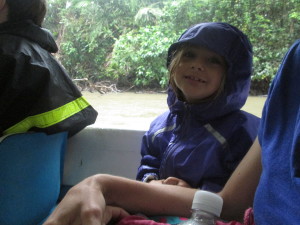
On the jungle cruise
Carefully navigating upstream, looking out for empty soda bottles tied to submerged hazards, the captain made his way deeper and deeper into the jungle. Several times we bumped the bottom, often we had to pull over and cede the way to boats traveling downstream, and at some point during the two-hour trip I began to realize we hadn’t seen the luggage boat since we departed Tortuguero. Maybe its skipper knew a short cut?
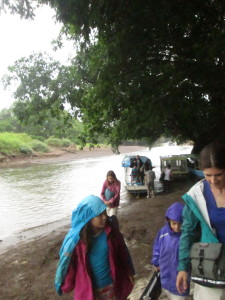
After the muddy landing at La Pavona, it was land travel the rest of the way
It ended, as all of our travle stories have during this trip, happily enough. The luggage boat passed us about an hour and forty minutes into the trip, a few extra tarps covering its payload. Twenty minutes later we were pulling up to the muddy hillside that was the La Pavona landing.
At the top of the hill was a depot where most tourists from our boat headed for fancy tourism transit and we got assistance from the very kind driver of the local bus. He brought us to Carriari and informed us how to get to the terminal for the San Jose bus.
It was only three blocks away and it was nestled between a bakery and a smoothie shop, very convenient for lunch time connection. Even better, we only had a 45 minute wait for the direct bus to San Jose. An initial sketch of the day’s travel contained the possibility that we would have to take another bus to another town to catch a fast bus to San Jose. Also good news: Even though the bathrooms cost 150 colones to use, the lady let me in for free. All the ladies in our group got hit by the tarrif. It must be my new haircut.
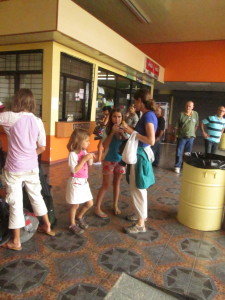
Lunch outside the ticket window in Carriari. Look for these places on the map. They really exist.
From there, it was like a highway to ever-increasing levels of civilization. We soon got back to the road we traveled to get to our rafting trip; this time we were going the other way. I recognized the large Pequeno Mundo store and the huge Taco Bell billboard well before we made it to the tunnel through the mountain. The inverse of the previous trip was true. Once we left the mountain pass and started to descend toward San Jose, the skies started to clear up.
It was dry by the time we reached the Caribbean bus terminal. A short taxi ride (very reasonable now that we know to seek out an official red taxi with an orange triangle on the side) brought us across San Jose and the public transport continental divide to the place where the Pacific-bound buses gather.
We had to wait an hour and a half for the next directo to Quepos. It was more than enough time to get a quick dinner at a corner cafe and for Zoe to inquire in the information kiosk if there was wifi in the terminal. (There wasn’t.)
The last bus trip showed just how civilized San Jose is. I spied a Walmart, P.F. Chang’s, Payless Shoe Source, Outback Steakhouse and a Pizza Hut. There was also a Simon Mall and an intriguing place called the Canada House, which featured a “Maple Market.” Add all this to the Applebee’s I saw last week and it’s starting to feel like Stoughton.
The Sun had set by the time we reached the Pacific coast, leaving us the pleasure of seeing the sights for the first time when we venture out this morning.
Our bus driver was kind enough to drop us off a few minutes from our apartment and all that was left was a steep climb, guided by a night watchman, and the unfortunate discovery that bedroom #2, the one with the extra bed, was the one with the air conditioning unit. If not for the full day of travel behind us, Jen and I might have been nimble enough to alter the arrangements without anyone being the wiser. The kids are attached to the room its coolness by now. It’s pretty hot here.
Otherwise, we seem to have fine accommodations and we’re excited to see what this side of the continent has to offer us.
As a last note about today’s journey: This should be our last multi-stage public transport day (unless you count next week’s two-leg flight to Belize or the flight home, but those don’t have the drama that bus and water travel do). We saw signs for flights we might have taken to get us across Costa Rica. The flight from San Jose to Quepos is reported to take only 20 minutes, which is attractive compared to our three-hour bus ride. Our travel today was efficient, both economically and ecologically, as public ground transportation usually is. I don’t know how much the flights would have cost, but we were quoted some exorbitant rates for private shuttles to various points. Here’s what yesterday’s intercontinental journey cost us (NB, we missed our window with Lanie; all the buses had signs that clearly said, “Children over the age of three pay full fare”):
Water taxi: 1,600 colones per person, plus 1,000 colonels each for five big backpacks = 13,000 colones or about $26
Bus from La Pavona to Carriari: 1,100 colones per person = 5,500 colones or about $11
Bus from Carriari to San Jose: 2,200 colones per person = 9,000 colones or about $18
Taxi between bus terminals in San Jose: 3,500 colones plus 1,000 colones tip = 4,500 colones or $9
Bus from San Jose to Quepos (directo with service to INVU, which is near enough our apartment that we wouldn’t need a taxi): 4,500 colones per person, plus 2,000 colones tip = 24,500 colones, or about $49.
Total trip cost: $113
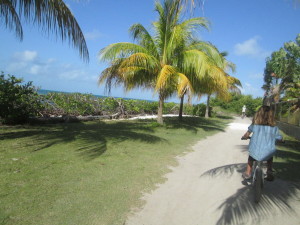 We all laughed with delight when we got off the ferry here and saw the tropical paradise: streets made of white sand, lined with palm trees and brightly-colored buildings, with the impossibly turquoise sea stretching out beyond. Better yet, Caye Caulker is also a safe and friendly place. We ride our bike around the car-less streets, weaving among pedestrians and golf carts. Rastafarians
We all laughed with delight when we got off the ferry here and saw the tropical paradise: streets made of white sand, lined with palm trees and brightly-colored buildings, with the impossibly turquoise sea stretching out beyond. Better yet, Caye Caulker is also a safe and friendly place. We ride our bike around the car-less streets, weaving among pedestrians and golf carts. Rastafarians 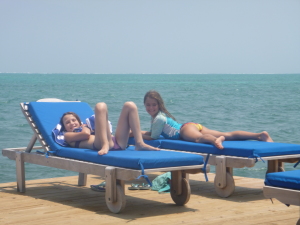 smile and shout out greetings from roadside shops, and we smile and wave back. Everyone seems to know everyone on this tiny island, and it feels like if you stayed for a few weeks you’d know everyone too. It’s a far cry from other places I’ve been in the Caribbean, where wealthy tourists are barricaded into their resorts to prevent any possibility of contact with the native population.
smile and shout out greetings from roadside shops, and we smile and wave back. Everyone seems to know everyone on this tiny island, and it feels like if you stayed for a few weeks you’d know everyone too. It’s a far cry from other places I’ve been in the Caribbean, where wealthy tourists are barricaded into their resorts to prevent any possibility of contact with the native population.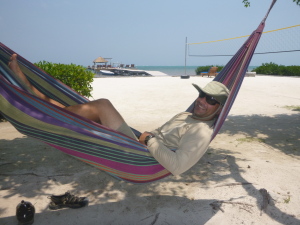 We have a lovely house with a pool, and our friends the Brookses have the same a couple of blocks away. We’ve spent much of our time swimming — in the pools, in the ocean at “the Split” (where a channel cuts the island in two), off the dock that our house has access to — and biking around town.
We have a lovely house with a pool, and our friends the Brookses have the same a couple of blocks away. We’ve spent much of our time swimming — in the pools, in the ocean at “the Split” (where a channel cuts the island in two), off the dock that our house has access to — and biking around town.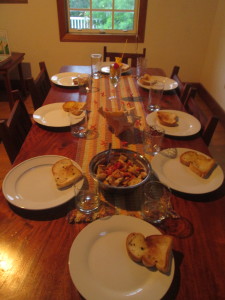
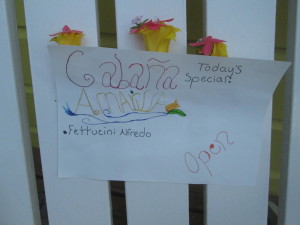
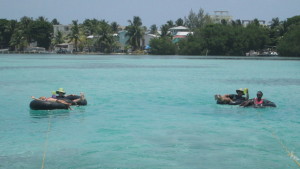 Today we split up into two groups. Zoe and Nadia joined most of the Brookses for an adventure that they will be describing in the future, while Bob and I took Lanie and Ganya on a tubing trip. We were pulled along behind a boat through the clear, blue-green waters around the perimeter of the island, with juice and rum punch being passed back to us at frequent intervals on a surfboard. A good time was had by all.
Today we split up into two groups. Zoe and Nadia joined most of the Brookses for an adventure that they will be describing in the future, while Bob and I took Lanie and Ganya on a tubing trip. We were pulled along behind a boat through the clear, blue-green waters around the perimeter of the island, with juice and rum punch being passed back to us at frequent intervals on a surfboard. A good time was had by all.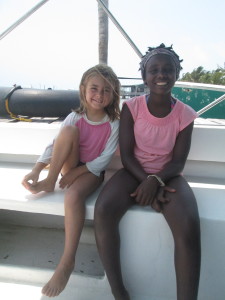 Tomorrow we sadly say goodbye to Caye Caulker, heading back to the mainland and into the western mountains. We also say goodbye to the Brookses, but not for long — we’ll be heading home in just over a week! It seems hard to believe. Two more stops in Belize and then we’re done.
Tomorrow we sadly say goodbye to Caye Caulker, heading back to the mainland and into the western mountains. We also say goodbye to the Brookses, but not for long — we’ll be heading home in just over a week! It seems hard to believe. Two more stops in Belize and then we’re done.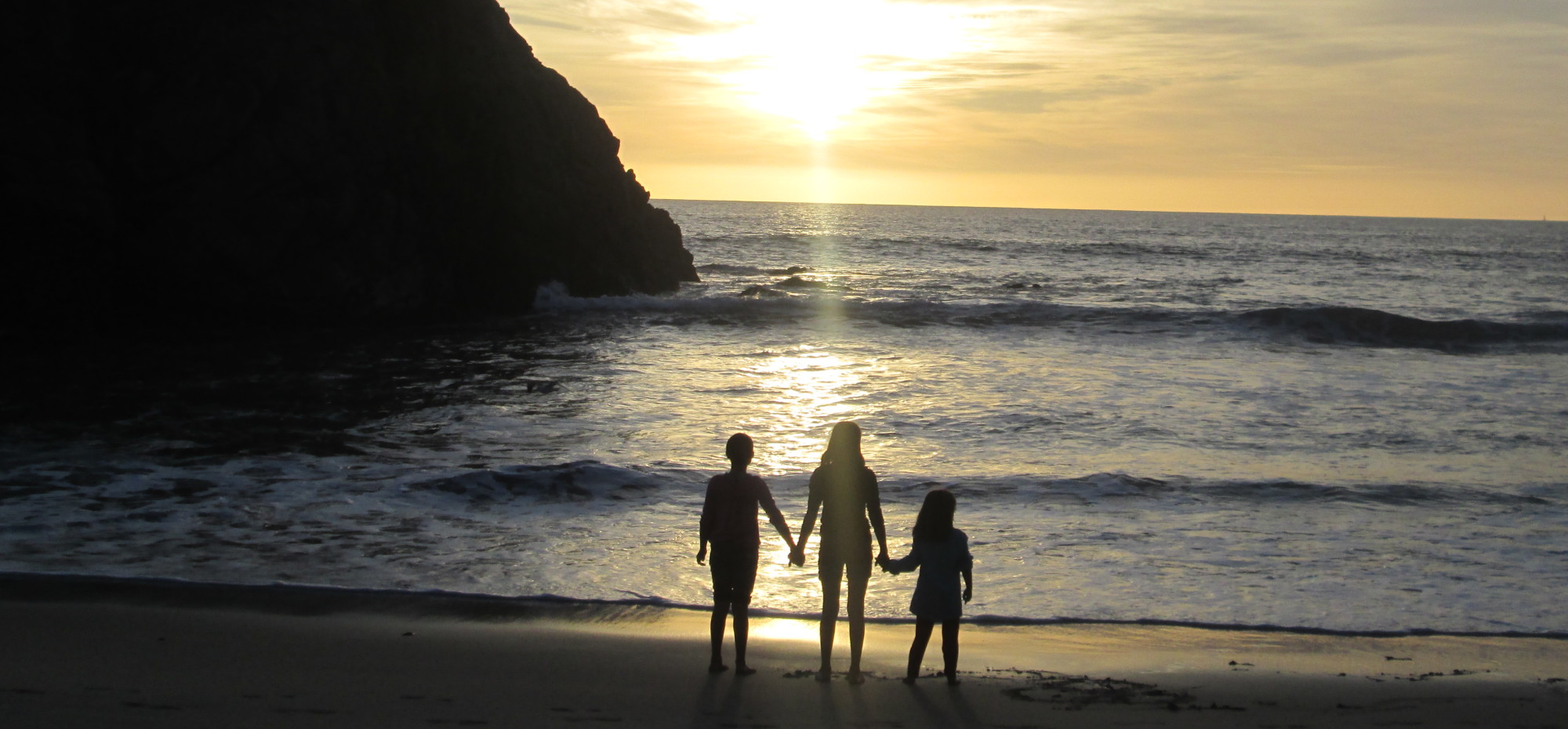
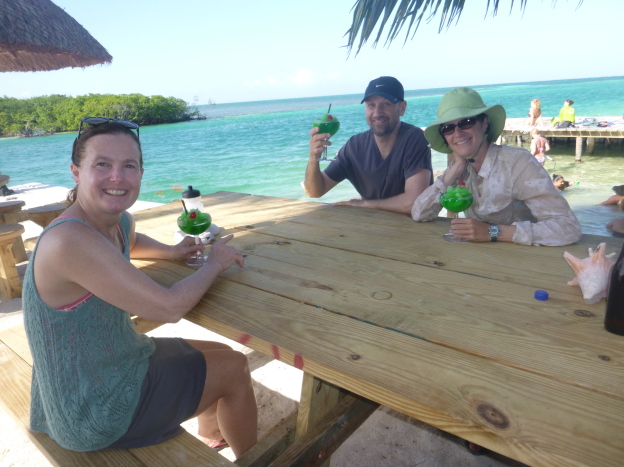
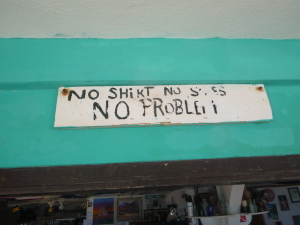
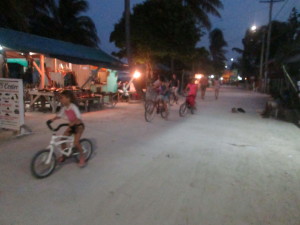
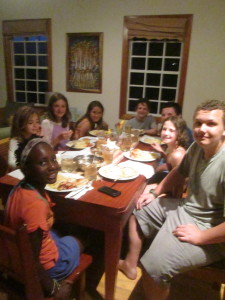
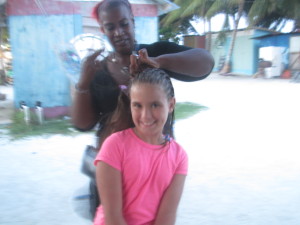
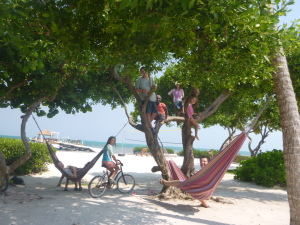
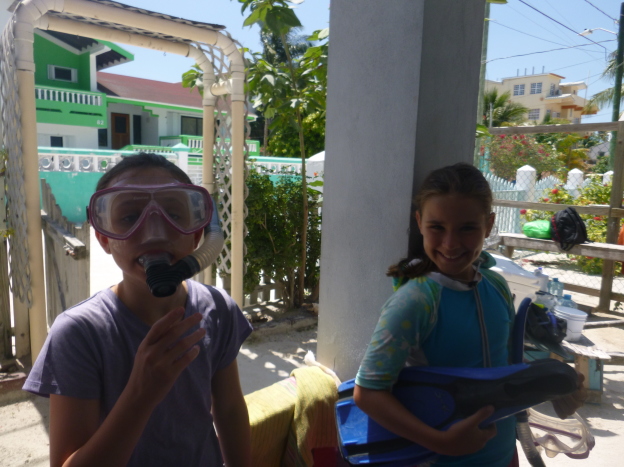
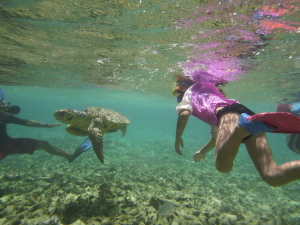
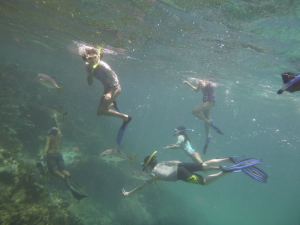
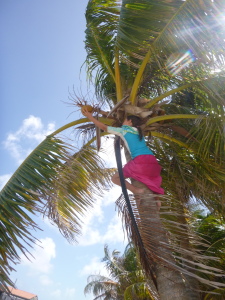
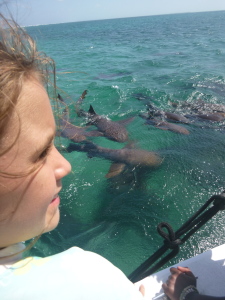
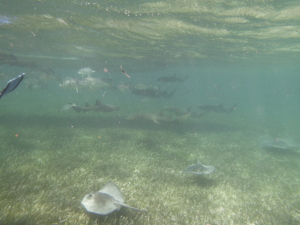
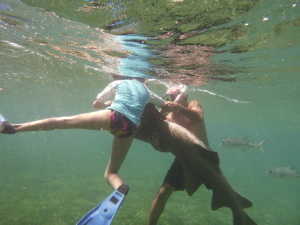
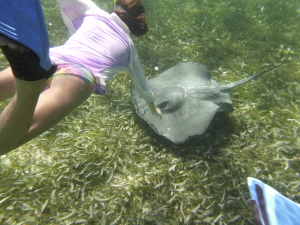
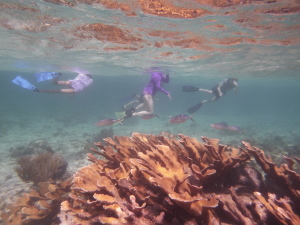
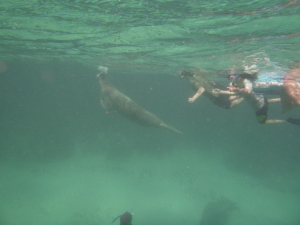
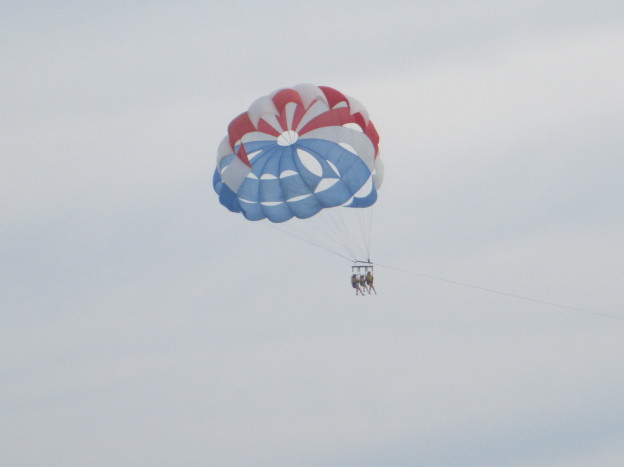
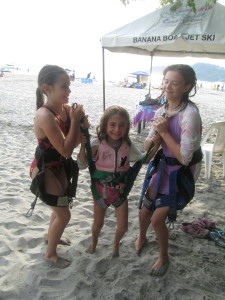
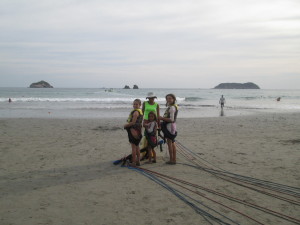
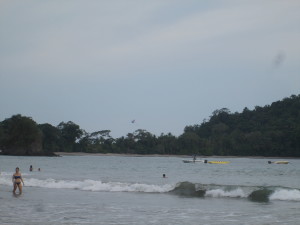
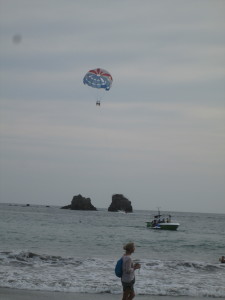
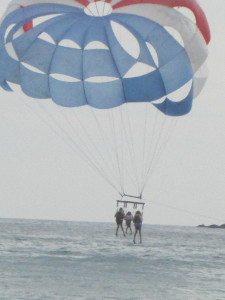
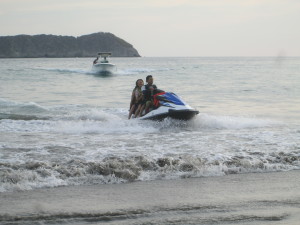
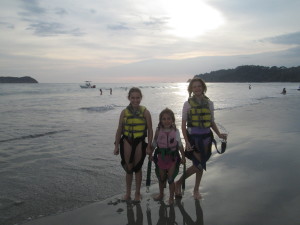
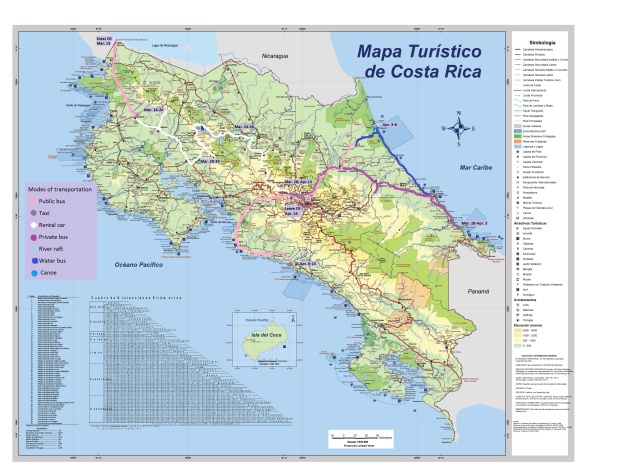
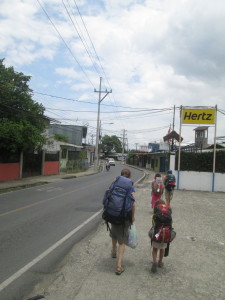

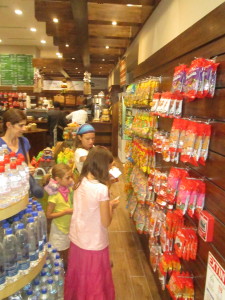
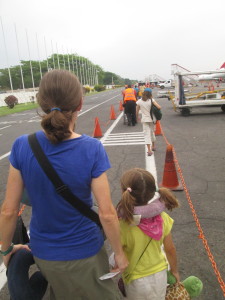
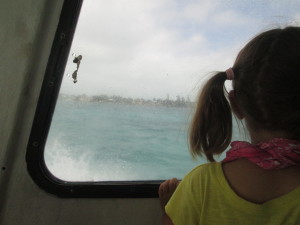

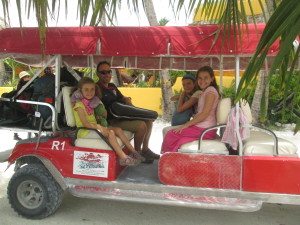
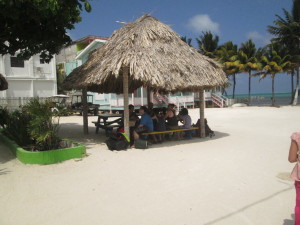
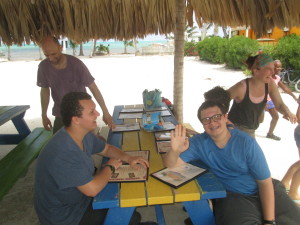
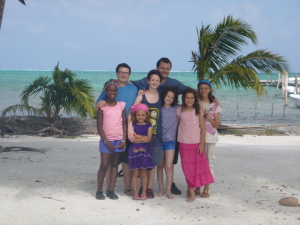
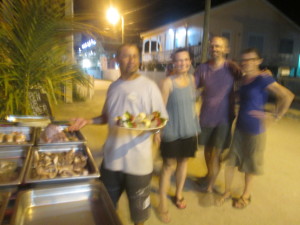
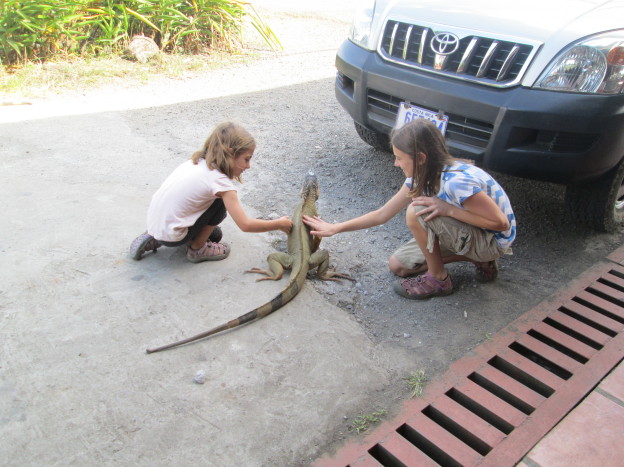
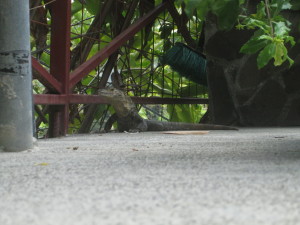
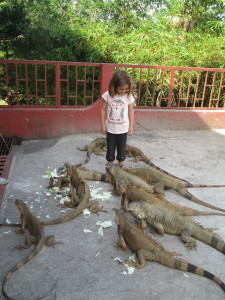
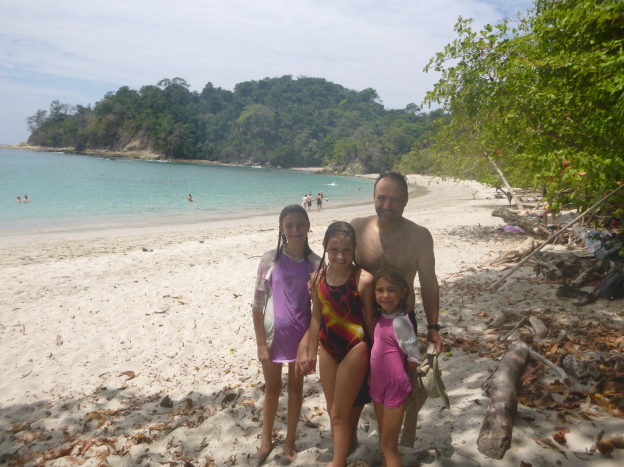
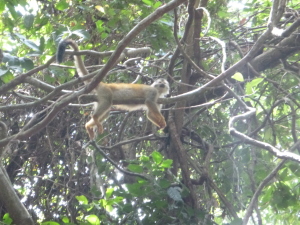
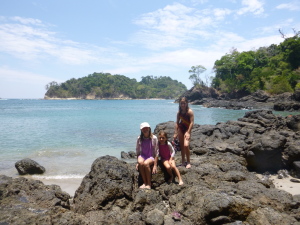
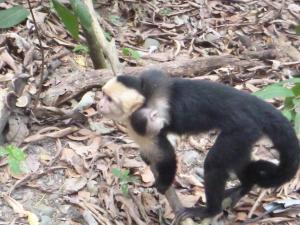

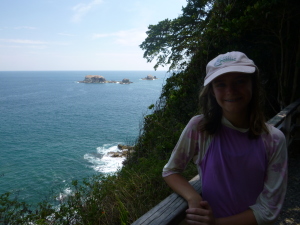
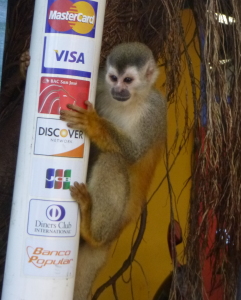
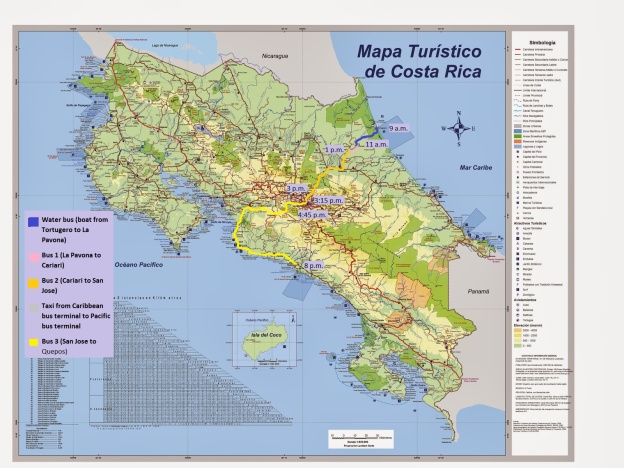





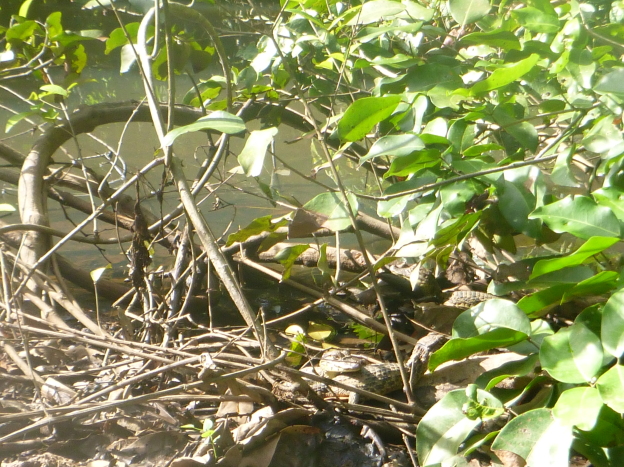
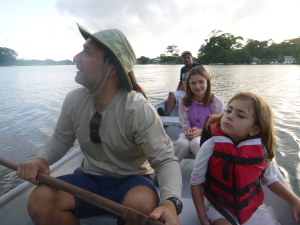
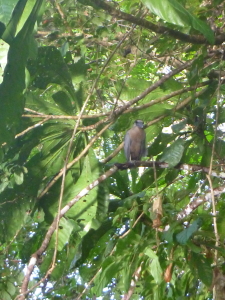
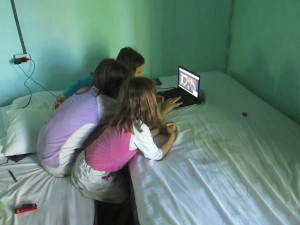
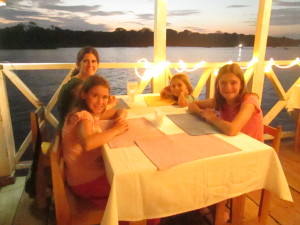
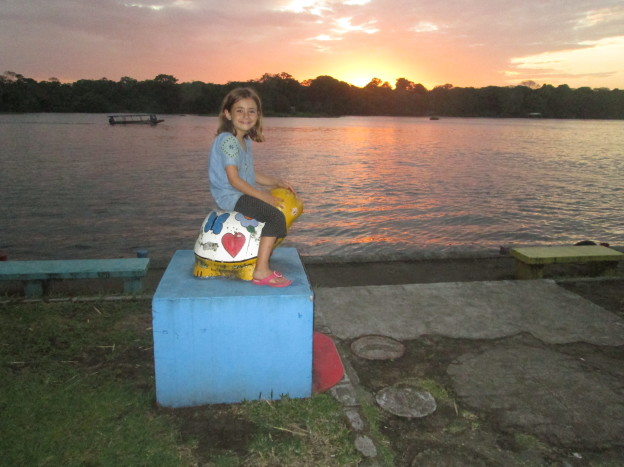
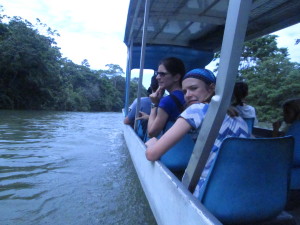
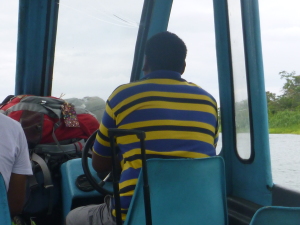
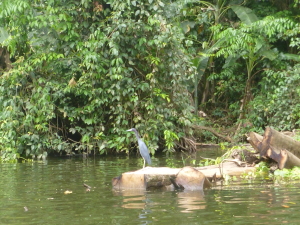
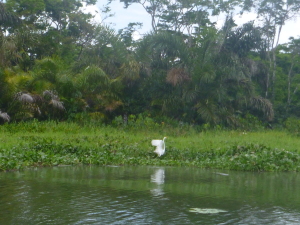
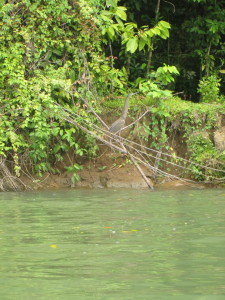
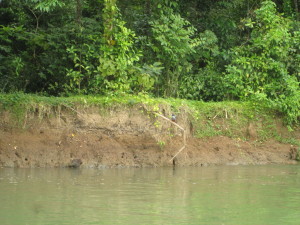
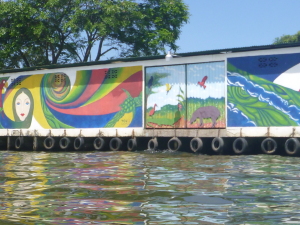
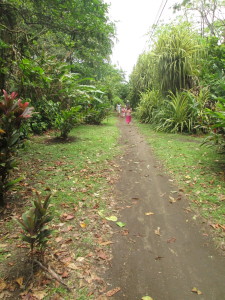
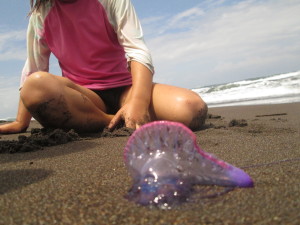
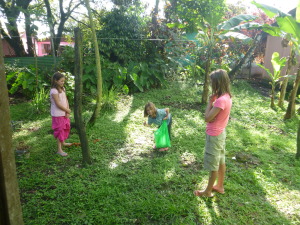
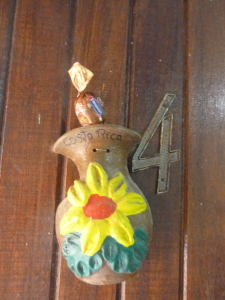
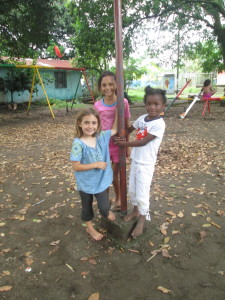
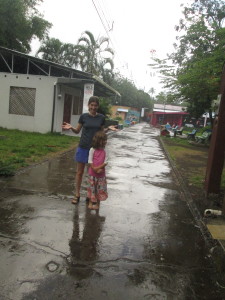
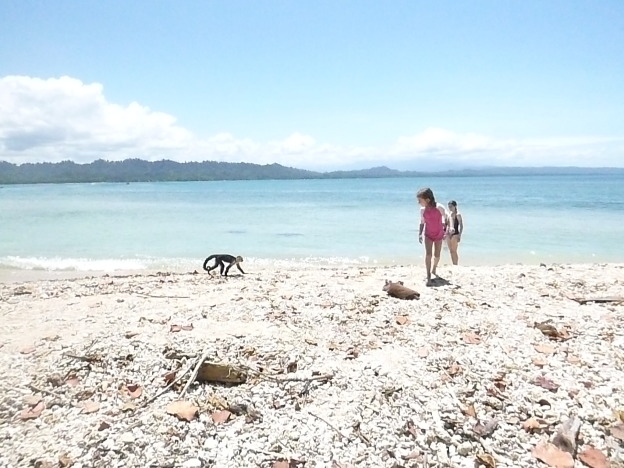
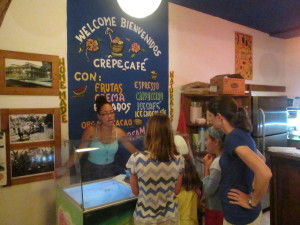
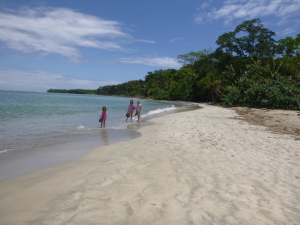
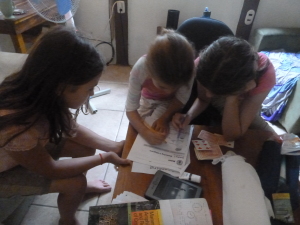
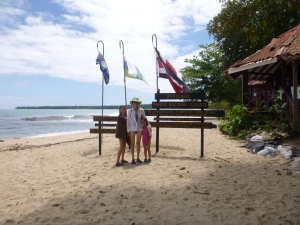
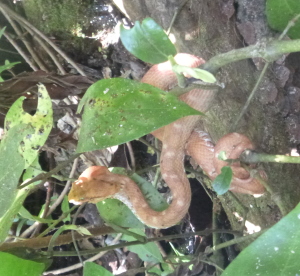
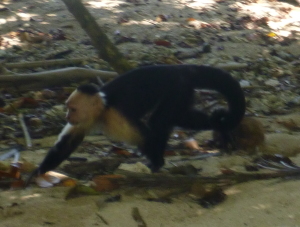
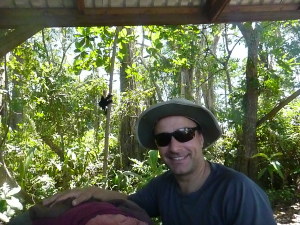
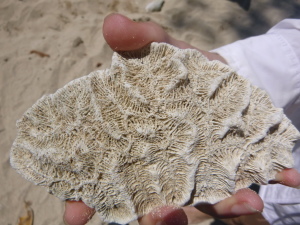
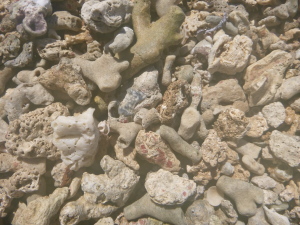
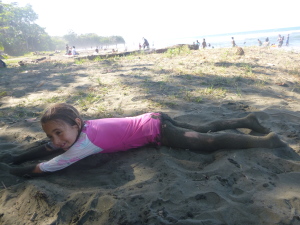
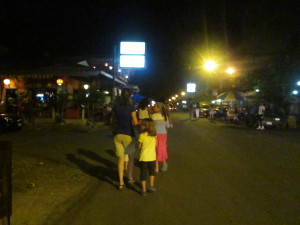 n our last night we decided to have a roving dinner of all the delicious-looking street food that we’ve seen being cooked up, and it did not disappoint. Pura vida!
n our last night we decided to have a roving dinner of all the delicious-looking street food that we’ve seen being cooked up, and it did not disappoint. Pura vida!